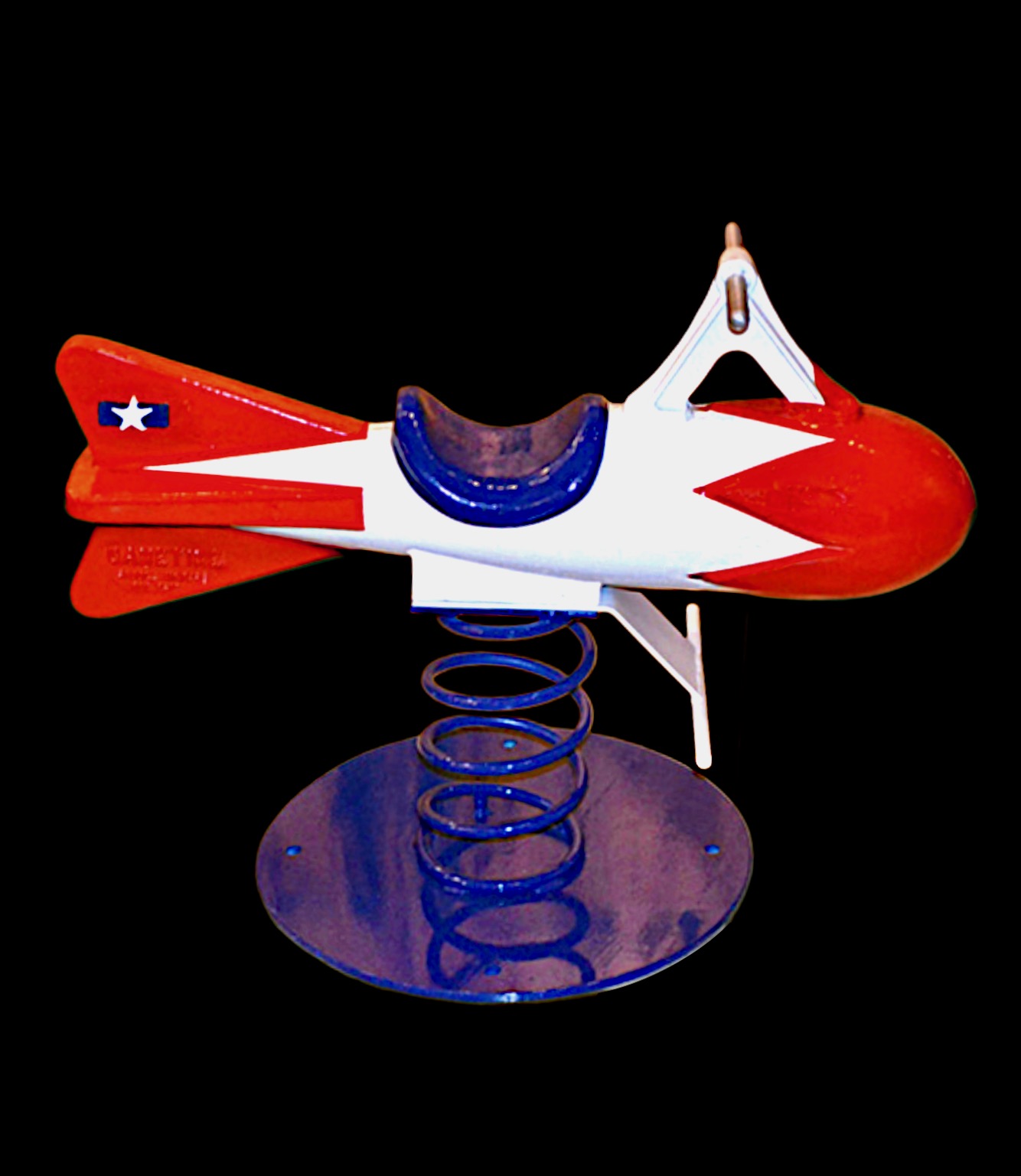

Title: Original Vintage Restored Saddle Mate Rocket Ride Toy Sculpture Equipment
Shipping: $29.00
Artist: N/A
Period: 20th Century
History: Art
Origin: North America > United States
Condition: Excellent
Item Date: N/A
Item ID: 1299
Restored Saddle Mate Rocket Ride: Museum-Quality Vintage Collectible. Cold War-Era Saddle Mate Rocket Ride – Completely Restored This Saddle Mate Rocket Ride has been meticulously restored to a condition that exceeds its original quality, now elevated to museum standards with historical accuracy. Featuring original display logos and signage authentic to its era, every detail has been faithfully preserved. The History of Game Time Saddle Mates Game Time Saddle Mates, founded in Litchfield, Michigan in the 1920s, was among the first companies to address the growing need for safe playground equipment. These items were popular in playgrounds, backyards, and storefronts as engaging pastimes for children. Each design reflected the prevailing culture of its time, capturing the essence of childhood play in the 20th century. The Evolution of Playgrounds The concept of playgrounds as a tool for teaching fair play and good manners originated in Germany, where they were initially connected to schools. The first purpose-built public-access playground was established in a park in Manchester, England, in 1859. This idea gained global traction over time, with organized play areas becoming common in many countries. In the United States, the first playground was constructed in San Francisco's Golden Gate Park in 1887. Recognizing the importance of playgrounds, President Theodore Roosevelt stated in 1907: City streets are unsatisfactory playgrounds for children because of the danger, because most good games are against the law, because they are too hot in summer, and because in crowded sections of the city they are apt to be schools of crime. Neither do small backyards nor ornamental grass plots meet the needs of any but the very small children. Older children who would play vigorous games must have places especially set aside for them; and, since play is a fundamental need, playgrounds should be provided for every child as much as schools. This means that they must be distributed over the cities in such a way as to be within walking distance of every boy and girl, as most children cannot afford to pay carfare. Post-War Innovation: The Advent of Adventure Playgrounds In post-war London, Lady Marjory Allen of Hurtwood, a landscape architect and children’s rights campaigner, pioneered the concept of the "junk playground." These playgrounds were constructed from recycled materials, such as rubble left behind from the Blitz. In 1953, the term "junk playground" was replaced with "Adventure Playground" following the establishment of the National Playing Fields Association, which spearheaded the creation of parks across the United Kingdom. This fully restored Saddle Mate Rocket Ride is a nostalgic symbol of a bygone era, embodying the rich history and evolution of childhood play while standing as a testament to craftsmanship and cultural preservation.
Children's playground toys and equipment have evolved significantly over time, reflecting cultural, social, and technological changes. The concept of organized play areas began in the 19th century, with the first public playground opening in Manchester, England, in 1859, and later spreading worldwide. Early designs prioritized safety and education, with companies like Game Time Saddle Mates in the 1920s creating equipment tailored to children’s interests. Post-war innovations, such as Lady Marjory Allen’s "Adventure Playgrounds" made from recycled materials, highlighted creative and inclusive approaches. Today, playground equipment combines safety, creativity, and interactivity, encouraging physical and imaginative play for children.